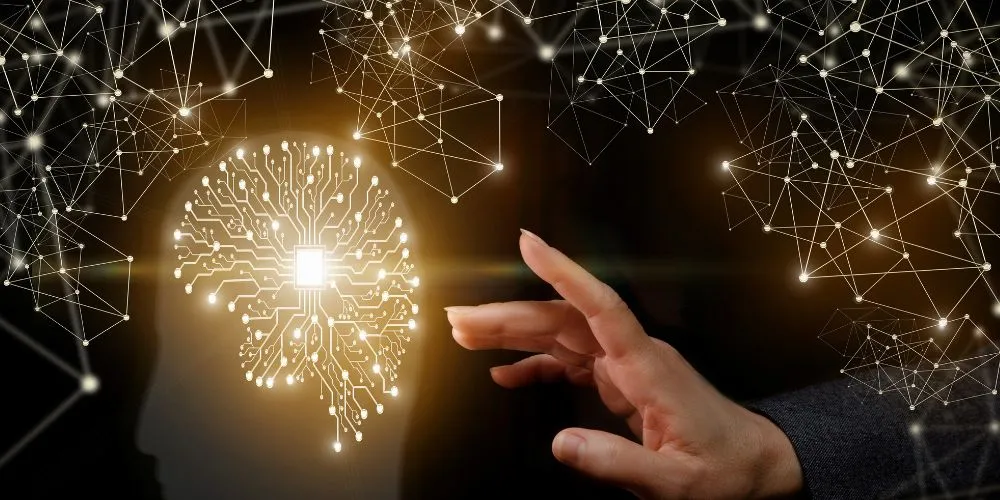Machine perception, a pivotal facet of artificial intelligence, empowers machines to interpret and understand the world through sensory inputs. This article delves into the intricate realm of machine perception, exploring its fundamental principles, diverse methodologies, key advantages, notable applications, and the challenges it navigates to endow machines with the ability to perceive and comprehend their environment.
Unveiling Machine Perception
Machine perception involves endowing machines with the ability to interpret and understand sensory information, akin to human perception. It encompasses processing visual data, auditory signals, tactile feedback, and more. The goal is to equip machines with the capability to make sense of their surroundings, enabling them to interact intelligently with the environment and respond appropriately to different stimuli.
The Senses in Machine Perception
Machine perception mimics human sensory modalities, incorporating visual perception, auditory perception, tactile perception, and beyond. Visual perception enables machines to interpret images and videos, auditory perception involves understanding sound, and tactile perception involves processing touch and pressure data. By combining these senses, machines gain a comprehensive understanding of their surroundings, similar to how humans perceive the world.
Sensor Technologies in Machine Perception
Sensor technologies are crucial components of machine perception systems. Cameras, microphones, accelerometers, and other sensors capture data from the environment, providing machines with the input needed for perception. Advances in sensor technologies, including high-resolution cameras and sophisticated microphones, enhance machine perception capabilities.
Multimodal Perception
Multimodal perception involves the integration of information from multiple sensory modalities. Machines can form a more holistic and nuanced understanding of their environment by combining visual, auditory, and tactile inputs. This integration is particularly valuable in applications where diverse sensory information enhances the overall perception accuracy and robustness.
Methodologies in Machine Perception
Various methodologies are employed in machine perception to process and interpret sensory data, enabling machines to perceive and understand their environment.
Computer Vision
Computer vision is a cornerstone of visual perception in machine perception. It involves using algorithms and models to analyze and interpret visual data, such as images and videos. Object recognition, image segmentation, and facial recognition are examples of tasks within computer vision that contribute to machine perception.
Speech and Audio Processing
In auditory perception, speech and audio processing play a vital role. Machines utilize speech recognition and audio signal processing techniques to understand spoken language, identify sounds, and extract meaningful information from auditory inputs. It is crucial in applications like virtual assistants and voice-controlled systems.
Haptic Perception
Haptic perception involves the processing of touch and pressure data. Tactile sensors and haptic feedback mechanisms enable machines to perceive and interact with physical objects. It is particularly relevant in applications like robotics, where machines must grasp and manipulate objects precisely.
Machine Learning in Perception
Machine learning plays a significant role in machine perception by enabling machines to learn patterns and features from sensory data. Supervised, unsupervised, and reinforcement learning are employed to train models for various perception tasks, allowing machines to adapt and improve their perception capabilities over time.
Advantages of Machine Perception
Machine perception offers several advantages, contributing to the development of intelligent systems with enhanced interaction and understanding of the environment.
Enhanced Decision-Making
By perceiving and understanding their environment, machines can make informed decisions. Visual recognition, for instance, allows autonomous vehicles to identify obstacles, while audio processing enables virtual assistants to comprehend and respond to spoken commands. This enhanced decision-making capability is crucial in applications ranging from healthcare to robotics.
Improved Human-Machine Interaction
Machine perception facilitates more natural and intuitive interactions between humans and machines. Speech recognition enables voice commands, computer vision allows gesture recognition, and haptic perception enables touch-based interfaces. These advancements enhance user experience and make human-machine collaboration more seamless.
Increased Autonomy in Machines
Autonomous systems heavily rely on machine perception to navigate and operate independently. From self-driving cars interpreting road scenes to drones avoiding obstacles, machine perception contributes to the increased autonomy of machines, enabling them to function in complex and dynamic environments.
Versatility Across Domains
The versatility of machine perception is evident across diverse domains. From healthcare, where medical imaging aids in diagnostics, to manufacturing, where robotic systems use visual and tactile perception for assembly tasks, machine perception finds applications in solving complex problems in various industries.
Applications of Machine Perception
Machine perception finds application in many domains, showcasing its adaptability and efficacy in solving real-world challenges.
Autonomous Vehicles
In the realm of autonomous vehicles, machine perception is paramount. Computer vision enables vehicles to recognize road signs and pedestrians, while radar and lidar sensors provide depth perception. This comprehensive perception is essential for safe and efficient autonomous navigation.
Healthcare Imaging
In healthcare, machine perception is integral to medical imaging. Computer-aided diagnosis systems use visual perception to analyze medical images, aiding healthcare professionals in detecting and diagnosing conditions such as tumors or fractures.
Augmented and Virtual Reality
Augmented and virtual reality applications heavily rely on machine perception. Computer vision and sensor technologies enable these systems to interact with the physical world, providing users with immersive experiences. It is evident in applications ranging from gaming to training simulations.
Industrial Automation
In industrial settings, machine perception contributes to automation. Visual inspection systems use computer vision to identify defects in manufactured products, while robots equipped with haptic perception can handle delicate assembly tasks. These applications enhance efficiency and precision in manufacturing processes.
Challenges in Machine Perception
Despite its advantages, machine perception faces several challenges that impede its seamless integration into various applications.
Robustness to Environmental Variability
Machine perception systems often struggle with robustness in diverse and dynamic environments. Variability in lighting conditions, unpredictable sounds, or changes in object appearance can challenge the reliability of perception systems. Developing robust algorithms that can adapt to varying conditions remains a significant challenge.
Real-Time Processing Requirements
Many applications, such as autonomous vehicles or robotics, demand real-time processing for timely decision-making. Achieving real-time processing with complex perception tasks, especially when dealing with high-dimensional sensory data, poses a computational challenge that requires innovative solutions.
Ethical Considerations and Bias
Machine perception systems can inherit biases in the training data, leading to ethical concerns. Biases in visual recognition or speech processing may result in discriminatory outcomes. Addressing these ethical considerations requires a concerted effort to ensure fair and unbiased machine perception.
Future Trends in Machine Perception
As technology evolves, machine perception adapts to emerging trends, expanding its capabilities and applications.
Explainable and Transparent Perception Models
The demand for explainable AI extends to machine perception. Future trends involve developing models that make accurate predictions and provide transparent explanations of how they reached those conclusions. It is crucial for building trust in intelligent systems.
Integration of Edge Computing
The integration of edge computing with machine perception is a promising trend. By processing sensory data closer to the source, latency can be reduced at the network’s edge, making real-time perception more achievable in applications like IoT devices and autonomous systems.
Continual Learning and Adaptation
Continual learning, where machines continuously update their knowledge and adapt to new information, is a future trend in machine perception. This approach enables perception systems to evolve, improving their accuracy and adaptability in dynamic environments.
Conclusion
Machine perception stands as a testament to the evolving capabilities of artificial intelligence. Its ability to endow machines with sensory understanding opens doors to unprecedented applications across diverse domains. While challenges persist, ongoing advancements and trends indicate a dynamic and promising future for machine perception, shaping how intelligent machines perceive and interact with the world.”










